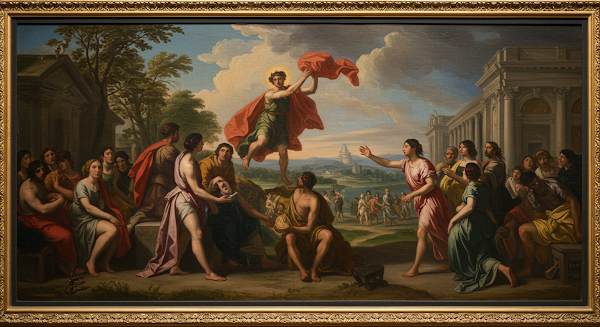A Beginner’s Guide to European Art Exhibitions
A Beginner’s Guide to European Art Exhibitions
Stepping into a European museum for the first time? It can be overwhelming—but it doesn’t have to be. Let’s break it down together!
Hey there, art curious folks! I still remember my first visit to the Louvre—I was awestruck, lost, and completely enchanted all at once. From Renaissance masterpieces to cutting-edge installations, Europe is an art lover’s playground. But if you’re new to all this, it’s easy to feel like you’re missing something. Don’t worry—I’ve got your back. This guide will walk you through how to enjoy, understand, and fall in love with European art exhibitions, even if you’ve never taken an art class in your life.
Table of Contents
Why European Art Is Worth Exploring
There’s something magical about standing in front of a painting that’s hundreds of years old and still sparks emotion. European art captures revolutions, personal struggles, love stories, and even political satire—all through brushstrokes and marble. Whether you’re into dramatic religious scenes, dreamy Impressionist landscapes, or quirky contemporary pieces, Europe has it all. It’s not just art—it’s time travel.
Top Museums and What Makes Them Special
With so many museums to choose from, where should a beginner start? Here’s a quick snapshot of some of Europe’s finest—each one a gem in its own right:
| Museum | Location | Highlight |
|---|---|---|
| Louvre | Paris, France | Mona Lisa, Venus de Milo |
| Uffizi Gallery | Florence, Italy | Botticelli's Birth of Venus |
| Prado Museum | Madrid, Spain | Velázquez and Goya masterpieces |
Understanding Art Movements and Styles
Feeling confused by all the “isms”? You’re not alone. Here’s a super simple breakdown to get you started:
- Renaissance: Realistic figures, religious themes, balance
- Baroque: Drama, bold color, movement
- Impressionism: Light, color, fleeting moments
- Modernism: Abstraction, new techniques, rebellion
How to Navigate Exhibitions Without Getting Overwhelmed
Let’s be honest—European art museums are massive. Trying to see everything in one visit? That’s a recipe for burnout. Instead, focus on a single wing or time period. Most museums offer free maps or even themed audio guides—use them! And don’t skip the gift shop; sometimes, the best understanding of what you saw comes from a well-chosen postcard or guidebook after your visit.
Gallery Etiquette and Cultural Know-How
Art spaces are sacred to some and casual strolls to others—but a few universal rules will keep you from getting the stink-eye. Don’t touch the art (obviously), don’t block views for too long, and speak in a low voice. Photography rules vary, so check signage or ask a guard before snapping that selfie. And hey—dressing respectfully doesn’t hurt either.
| Do | Don't |
|---|---|
| Use headphones for audio guides | Lean too close or point at artworks |
| Ask staff if unsure about photo policy | Use flash photography without permission |
| Take breaks to avoid fatigue | Talk loudly or take calls inside galleries |
How to Make the Most of Your Visit (Even on a Budget)
You don’t need to break the bank to enjoy Europe’s art scene. Many major museums offer free entry on certain days or discounted youth/student rates. Bring your own water, use public transportation, and download museum apps in advance for free tours. Oh, and don’t be shy—curators and staff are often thrilled to chat about their favorite pieces. One good question can turn your trip into a memory.
- Look for “first Sunday” free entry policies
- Visit smaller, local museums for hidden gems
- Use apps like Smartify or museum podcasts for free insights
In most museums, photography without flash is allowed, but some exhibitions may prohibit it entirely. Always check signs or ask staff.
1.5 to 3 hours is a good sweet spot for beginners. Take breaks and don’t feel pressured to see everything in one go.
That’s totally okay! Art is about feeling. Read the descriptions, join a guided tour, or just appreciate the colors and forms.
Not all, but many offer free days, student discounts, or combo tickets with public transport. Always check their website.
Comfortable shoes and smart-casual outfits work best. You’ll be on your feet a lot, but you’re still in a cultural space.
Yes, especially for popular museums like the Louvre or Vatican Museums. It saves time and sometimes even money.
Stepping into a European art museum for the first time is like opening a door to a different world. It’s not about memorizing names or dates—it’s about curiosity, emotion, and your own interpretation. I hope this guide made that world feel a little less intimidating and a lot more exciting. So go ahead, explore, ask questions, and let your imagination run wild. And if you found a piece that really moved you, come back here and share it. I’d love to hear your art discoveries!
european art guide, museum beginner tips, art exhibitions europe, louvre visitor advice, art styles explained, gallery etiquette tips, travel culture guide, impressionism for beginners, affordable art trips, first time museum visit







